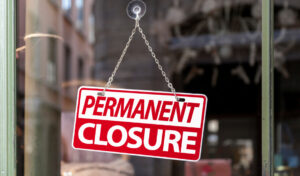Sustainability is no longer an afterthought or a nice-to-have. Sustainability in retail, as in every industry, has now become the focus.
In our blog on Customer Demand for Sustainability, we covered why sustainability should be a priority for every retail organization to meet the growing concern of consumers.
For example, 89% of consumers believe brands need to do more to reduce their carbon impact according to a 2021 Statista survey. Beyond meeting customers’ call to operate more sustainably it’s the right thing to do for our planet and for future generations. But sustainability is such a broad term and can mean many things. Starting the process can be overwhelming for large retailers, and some feel unsure where to start on this huge undertaking.
The Bunzl Retail Services team has recently worked with some of the nation’s largest retailers to implement more sustainable solutions, we wanted to share a little bit about how to start the complicated process. Whether you’re in retail procurement, operations, sales or finance, you can bring value to your team by getting the conversation moving and taking real steps toward sustainability.
Starting the Sustainability Conversation: 7 Steps for Retailers
1. Identify Your Company Goals
The first step to creating an action plan to become more sustainable or green as a retail business is to first establish or identify existing goals. Setting quantitative and measurable goals will give your team a target to aim for and help focus your efforts. Sustainability is a spectrum, and there are countless ways to approach it and find solutions. Find where your company is on that spectrum and where is a realistic place to start. Set goals that align with your company mission, vision and values. Also, consider what your customers expect and what your competitors are doing.
Some examples of goals could be to reduce carbon emissions by X% or to divert X% from landfills. Reducing single-use plastics is a huge area of focus and one that will eventually become inevitable to act on, whether through legislation or customer demand
2. Remember Progress vs. Perfection
Of course, no company is going to become “sustainable” overnight. Think about moving toward sustainability as a progression versus a huge shift or complete overhaul. Start with small steps and the low-hanging fruit. “Shifting to a sustainable business practice can be very daunting and come with the expectation that it will be very costly. I like to think of this change as an opportunity to learn what the market has to offer and leverage this alongside existing priorities and relationships,” says Bunzl Retail Services Senior National Acct. Manager Alison McEwan. She has helped retailers walk through this process many times.
Her advice: “Start with one commodity and evolve from there. “Consider where can you easily make some changes that may have a big impact. Where can you consolidate or make some simple sustainable swaps?
3. Compare Current Vendor Offerings
Review your company’s current catalog with a vendor like Bunzl Retail Services offerings and compare needs and overlap. There are likely many categories that align with your sustainability goals. Bunzl Retail Services offers office and backroom supplies such as copy paper, toilet paper, and hardwound towels that are made from post-consumer recycled content. We can also provide compostable options for paper plates, forks and cups. Consider any single-use items your retail locations currently use and where you can utilize reusable, recyclable or compostable options. Phenol-free receipt tape is another retail supply that can deliver a safer, greener shopping experience for your retail customers. Many retailers we work with include the message that their tape is phenol-free on their receipts to promote the work they are doing to keep their customers safe.
4. Chemicals ManagementStrategy
Identify a certification list that aligns with your company goals such as Green Seal Certified, Ecologo, Safer Choice, and USDA Bio-Preferred. Read about their specifications here to see which offers the best fit for your brand and needs. Once you’ve identified a brand or certification that works with your sustainability standards, the process can become simpler through a reliable and consistent source.
5. SKU Rationalization
Analyze your current products and eliminate SKUs that aren’t needed or are redundant within your product line. By limiting the number of products you offer and rationalizing your SKUs, you can make balanced inventory management easier to achieve. For example, for retail operations this may mean finding similar-sized can liners that can be reduced to one SKU. By decreasing the number of SKUs used in your retail operations you can reduce your carbon footprint with fewer numbers of less-than-truckloads and cut costs.
6. Retail Supply Consolidation
Once you have your sustainability goals set and your items identified with your retail supply vendor, analyze where you can eliminate redundancies and streamline the process.If you’re using multiple vendors for your retail operations supplies, aim to consolidate for fewer orders, packaging and shipments to lower your footprint. Work with your Account Manager to identify if there are any items your company currently sources that are already offered through a generic catalog. Utilizing a retail supplies provider can help secure better pricing and create more operational efficiencies.
7. Share Your Retail Sustainability Goals and Progress
After your company has begun implementing your sustainability goals, share it with your customers! Make your sustainability pledge known. Whether you include signage in store about safer cleaning products or your reduction stats on your website and social media, your customers will feel confident knowing they are supporting a brand that is making positive environmental choices and has a specific plan in place.
Do you need help getting the conversation and process moving for more sustainable options for retail supply? Email us and we can create a solution tailored to your needs.
Written August 10, 2022 by Bunzl Retail Services staff writers





